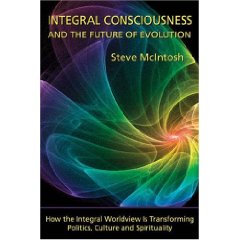 Key Piece in a Body of Work of Great Import, February 24, 2008
Key Piece in a Body of Work of Great Import, February 24, 2008
Thomas Homer-Dixon
I have read and reviewed one earlier book by this author, and bought the two more recent works a week ago after realizing I had seriously under-estimated the relevance of this author's work to my holistic integrative “civilization resilience” intent.
This is a five-star book and I expect Upside of Down will be as well.
I was immediately struck by the grace with which the author credits key other minds in the body of the work rather than just as a footnote.
Here are the highlights from my flyleaf notes, and a few other recommended readings:
+ Complexity soaring, need ideas for better institutions and better social arrangements.
+ Delusion of control over complex systems we barely comprehend
+ Citing Paul Rober: ideas co-equivalent to capital and labor
+ Not enough time to reflect (I am reminded of
The Age of Missing Information
Fog Facts: Searching for Truth in the Land of Spin
+ Full credit to H. G. Wells for anticipating the need for a World Brain to manage the complex of complexes
+ Excellent overview of mistakes by the economists. I recommend as well
Bad Samaritans: The Myth of Free Trade and the Secret History of Capitalism
Confessions of an Economic Hit Man
The End of Poverty: Economic Possibilities for Our Time
+Wealth gaps + migrations = poor global management
+ Losing 25% of our biodiversity
+ Delays in policy understanding, decisions, action, and outcomes compound losses over time
+ Mike Whitfield cited on need for holistic view, keystone species, and radical differences in compressed time scales. I am reminded of everything written by Richard Falk, Ervin Laszlo and others in the 1970's and 1980's.
+ Population factor is profound
+ Corruption is the primary obstacle to reform
+ Garbage overtaking coastlines while nitrogen leeches into water and carbon dioxide goes into the atmosphere
+ Citing David Harvey, “hypercapitalism” compresses time and space while over-producing both wasted production and concentrated wealth
+ Our collective ego is blocking our collective intelligence. See the new book, Collective Intelligence: Creating a Prosperous World at Peace
+ Losing our sense of place, not getting enough signals to understand the tipping point circumstances
+ Complexity goes awry (he cited Perrow, whose book Normal Accidents: Living with High-Risk Technologies remains a seminal work (simple systems have single points of failure easy to diagnose and fix; complex systems have multiple points of failure that interact in unpredictable and sometimes undiscoverable ways; we live in a constellation of complex systems well beyond our ken)
+ Complex systems characterized by multiplicity; causal feedback; some tightly coupled; interdependence; openness; synergy; and nonlinear behavior.
+ Chaos theory warns us that nature will magnify the smallest perturbation from humans
+ Four stages of human perception of nature: 1) Balancing; 2) Anarchic; 3) Resilient; 4) Evolving.
+ Citing Wally Broeker: “Climate is an angry beast, and we are poking it with sticks.”
+ Social systems are path dependent, delay at any point can be disastrous
+ Lessons of financial crises: governments and the IMF are out of touch with speed and breadth of financial systemic changes; computer-driven changes can accelerate and deepen mistakes
+ Citing Kofi Annan: “imbalance between economic, social, and political realms can never be sustained for long.”
+ Author: social system out of synch with natural and technological systems
+ Software code doubling every two years, bugs a real problem, still in pre-industrial era
+ Information glut has a critical bottleneck, lack of a sense-making bridge from data to our cognitive absorption
+ Ingenuity is both technical and social
+ Our biggest problem is the failure of our economic institutions and policies
+ Washington DC bureaucrats, including senior CIA analysts, “largely out of their depth”
+ Pace of change, depth of ignorance, and political resistance all assume scary proportions
+ Self-organizing resilience and adapting systems could be key
+ As ingenuity gap widens “need imagination, metaphor, and empathy more than ever.”
+ Afterword: relentless increase in complexity while “world economic system is profoundly dysfunctional.”
+ Most interesting to me, as I have committed to publish a book on “Cultural Intelligence” in 2009, is the author's citing of Robert Boyd and Peter Richerson, saying culture is “information–skills, attitudes, beliefs, values–capable of affecting individuals' behavior.”
There are other notes but Amazon imposes a word limit. This is a great book, and I honor it by listing other great and relevant works below (to my limit of ten):
The Health of Nations: Society and Law beyond the State
The leadership of civilization building: Administrative and civilization theory, symbolic dialogue, and citizen skills for the 21st century
The Wealth of Networks: How Social Production Transforms Markets and Freedom








